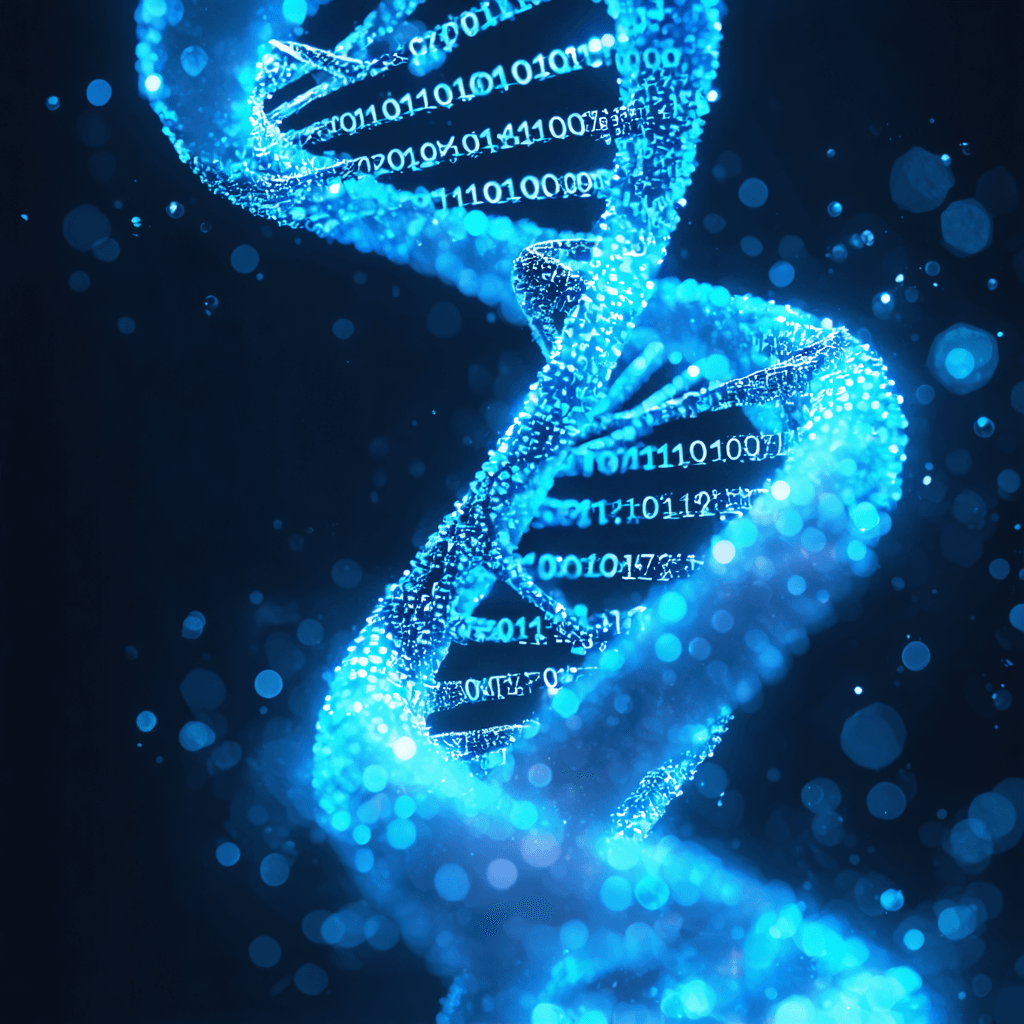Décrypter le Code : Comment les Changements Itératifs Remodelent Notre ADN Numérique et Transforment les Systèmes d'Information
Dans le paysage numérique actuel en constante évolution, le concept de changement itératif est devenu la pierre angulaire du développement logiciel moderne et des systèmes d'information. Tout comme l'évolution progressive de l'ADN qui façonne les organismes biologiques, les changements itératifs dans nos systèmes numériques transforment fondamentalement la façon dont nous construisons, maintenons et améliorons les solutions technologiques.
L'ADN de l'évolution numérique
Tout comme l'ADN biologique porte les instructions pour la croissance et le développement, notre ADN numérique – composé de code, d'algorithmes et d'architecture de systèmes – contient le plan de notre avenir technologique. Ce code génétique numérique est constamment réécrit par le biais de processus de développement itératifs, permettant aux organisations de s'adapter et de prospérer dans un écosystème technologique en constante évolution.
Comprendre le développement itératif
Le développement itératif est plus qu'une simple méthodologie ; c'est un changement fondamental dans notre approche de la résolution de problèmes à l'ère numérique. Contrairement aux méthodes traditionnelles en cascade, le développement itératif adopte l'amélioration continue par le biais de petits changements gérables. Cette approche reflète l'évolution naturelle, où de petites mutations au fil du temps conduisent à des adaptations significatives.
Composants clés de la transformation de l'ADN numérique
1. Intégration et déploiement continus (CI/CD)
Les systèmes numériques modernes reposent sur le principe de l'intégration et du déploiement continus. Ce processus implique :
- Commits de code réguliers
- Tests automatisés
- Déploiement transparent
- Boucles de rétroaction constantes
Ces éléments fonctionnent ensemble pour créer une infrastructure numérique robuste et adaptable.
2. Architecture de microservices
Le passage aux microservices représente une évolution significative de notre ADN numérique. En décomposant les applications monolithiques en services plus petits et indépendants, les organisations peuvent :
- Améliorer l'évolutivité
- Améliorer l'efficacité de la maintenance
- Réduire les vulnérabilités du système
- Permettre des mises à jour et des améliorations plus rapides
3. Prise de décision basée sur les données
Dans l'écosystème numérique moderne, les données servent de blocs de construction de l'évolution. Les organisations qui exploitent efficacement les données peuvent :
- Identifier les tendances et les modèles
- Prendre des décisions éclairées
- Optimiser les processus
- Prévoir les besoins futurs
L'impact des changements itératifs
Transformation des entreprises
Les changements itératifs ont révolutionné la façon dont les entreprises fonctionnent et évoluent. Les entreprises qui adoptent cette approche bénéficient de :
- Délais de mise sur le marché plus courts
- Coûts de développement réduits
- Satisfaction client améliorée
- Avantage concurrentiel accru
Gestion de la dette technique
L'un des avantages les plus importants du développement itératif est sa capacité à gérer efficacement la dette technique. En apportant de petites améliorations constantes, les organisations peuvent :
- Empêcher l'accumulation de code obsolète
- Maintenir l'efficacité du système
- Réduire les coûts de maintenance à long terme
- Améliorer la fiabilité du système
Dynamique d'équipe et culture
L'approche itérative a des effets profonds sur la dynamique d'équipe et la culture organisationnelle :
- Favorise la collaboration
- Encourage l'innovation
- Facilite le partage des connaissances
- Renforce la résilience
Meilleures pratiques pour la mise en œuvre
1. Commencer petit, voir grand
Commencez par des changements gérables tout en gardant une vision pour des transformations plus importantes :
- Fixer des objectifs clairs et réalisables
- Suivre les progrès régulièrement
- Ajuster les stratégies en fonction des commentaires
- Mettre à l'échelle les implémentations réussies
2. Adopter l'automatisation
L'automatisation est cruciale pour le succès du développement itératif :
- Mettre en œuvre des tests automatisés
- Utiliser des pipelines de déploiement
- Tirer parti des outils de surveillance
- Établir des mécanismes de rétroaction
3. Favoriser une culture d'apprentissage
Créer un environnement qui encourage l'apprentissage et l'expérimentation :
- Soutenir le développement professionnel
- Encourager l'expérimentation
- Tirer des leçons des échecs
- Partager les réussites
L'avenir de l'évolution numérique
Alors que nous regardons vers l'avenir, le rôle des changements itératifs dans la formation de notre avenir numérique devient de plus en plus important. Les technologies émergentes comme l'intelligence artificielle et l'apprentissage automatique accélèrent cette évolution, créant des systèmes qui peuvent :
- S'auto-optimiser
- S'adapter automatiquement
- Apprendre de l'expérience
- Prévoir et prévenir les problèmes
Mesurer le succès
Pour garantir la mise en œuvre efficace des changements itératifs, les organisations doivent se concentrer sur :
- Indicateurs clés de performance (KPI)
- Commentaires et satisfaction des utilisateurs
- Mesures de performance du système
- Mesures de la productivité de l'équipe
Construire des systèmes résilients
L'objectif ultime du développement itératif est de créer des systèmes résilients et adaptables qui peuvent :
- Répondre à l'évolution des exigences
- Évoluer efficacement
- Maintenir les performances sous contrainte
- Se remettre rapidement des pannes
Conclusion
La transformation de notre ADN numérique par le biais de changements itératifs n'est pas seulement une évolution technologique ; c'est un changement fondamental dans notre approche de la résolution de problèmes et du développement de systèmes. En adoptant ces principes, les organisations peuvent construire des systèmes plus robustes, efficaces et adaptables qui résisteront à l'épreuve du temps.
Prêt à plonger plus profondément dans le monde de la transformation numérique et du développement itératif ? Explorez nos cours et ressources complets chez 01TEK, où nous aidons les professionnels à maîtriser l'art et la science du développement logiciel moderne. Visitez notre site Web pour commencer votre voyage vers l'excellence numérique et rejoignez une communauté de développeurs et d'architectes avant-gardistes qui façonnent l'avenir de la technologie.
Transformez vos compétences, transformez votre avenir.
One day your life will flash before your eyes. Make sure it is worth watching.
Mooie



